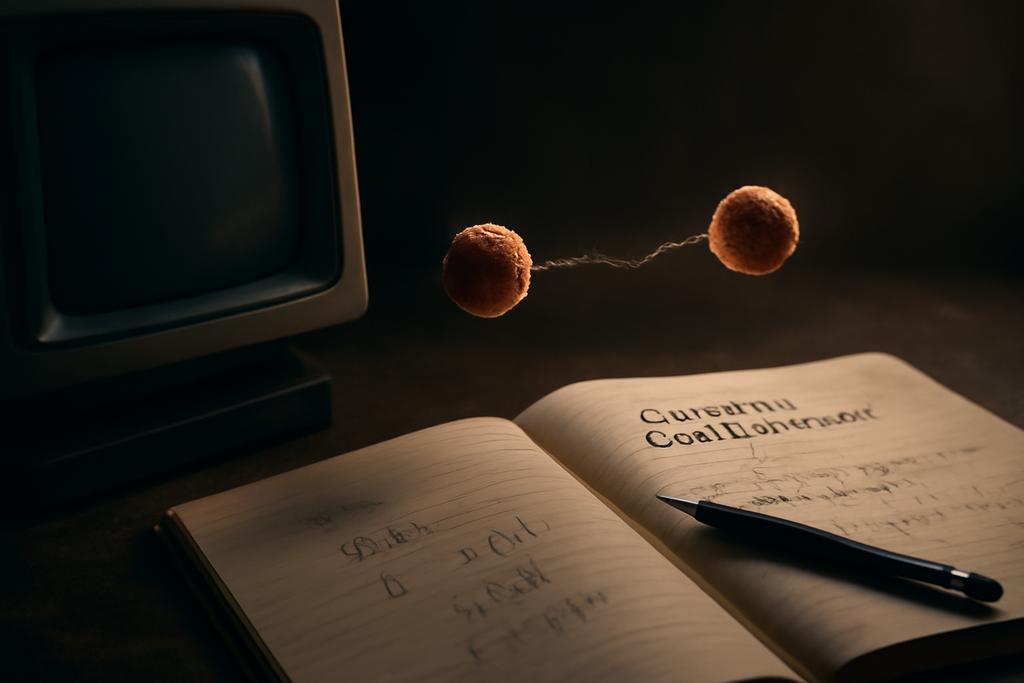Imagine two particles, born together in a high-energy collision, so deeply intertwined that they share a single destiny, a phenomenon known as quantum entanglement. We’ve long known their fates are linked in terms of properties like spin — a fundamental quantum property somewhat analogous to a tiny internal compass needle. But what if this eerie connection extends beyond spin to even dictate when these particles die?
A New Frontier in Entanglement
That’s the radical question at the heart of new research from Aihong Tang at Brookhaven National Laboratory. For decades, physicists have explored entanglement primarily through the correlations of particles’ spatial orientations (like spin). This work, however, proposes a mind-bending idea: what if the *very timing* of their decay, their ultimate demise, is also entangled?
The paper explores the idea by examining Lambda (Λ) and anti-Lambda (Λ̄) pairs — subatomic particles produced in high-energy collisions. These pairs are ideal for studying entanglement because they are born intertwined, their spins intimately connected. Tang’s research proposes a direct test of whether their lifetimes—how long they exist before decaying into other particles—are also linked by this spooky action.
Beyond Spin: The Time-Domain
The standard picture of quantum mechanics suggests the decay of each particle is a completely independent event. Think of it like this: imagine flipping two coins. The outcome of one flip doesn’t influence the outcome of the other. Similarly, a common assumption is that entangled particles decay independently, even if their spins are linked. But Tang’s research challenges this assumption.
If the particles’ decay times were truly independent, then measuring one particle’s lifetime shouldn’t tell us anything about the other’s. However, if their lifetimes are entangled, we could potentially find a correlation — a statistical link — between the times each particle decays. Tang’s research introduces two rigorous tests — one focusing on the *difference* between decay times, and another on the *product* of their individual lifetimes — to meticulously probe these correlations.
The Experimental Challenge: Separating Signal from Noise
This isn’t just a matter of simply measuring the lifetimes. The enormous challenge is disentangling genuine quantum correlations from background noise in the chaotic maelstrom of a particle collider. This requires sophisticated methods to filter out random fluctuations in the timing of decay, the equivalent of separating signal from the static on a radio.
Tang addresses this by using a clever trick: comparing results from “same-event” pairs (Λ and Λ̄ produced in the same collision) against “mixed-event” pairs (Λ and Λ̄ taken from different collisions). By comparing these, any spurious correlations introduced by the detector or other experimental factors can be subtracted out, leaving only the potential signal of entanglement in the lifetimes.
The Implications: Rewriting the Rules of Quantum Mechanics?
What are the stakes? The potential discovery of lifetime entanglement would have profound consequences. It would represent a fundamental extension of our understanding of quantum entanglement, revealing a deeper level of connection than previously imagined — a kind of shared clockwork governing not just spatial orientation but also temporal existence.
Such a finding would challenge existing models of quantum mechanics. In essence, this research explores whether entangled particles remain linked not merely through a shared state, but through a shared lifespan—even though they are separated by space. A positive result could necessitate a refinement of our understanding of how quantum systems evolve over time.
Beyond Λ and Λ̄: A Broader Search
The beauty of this study is its potential generality. Tang’s proposed methods are not limited to Λ and Λ̄. They can be extended to other types of entangled particles, such as Ξ−−Ξ+ and Ξc−Ξc pairs (which are heavier cousins), potentially offering further insights into the universality of time-domain entanglement. These broader investigations could reveal subtle flavor dependencies in this quantum dance of lifetimes.
The Future: An Experimental Frontier
The experiments to test Tang’s ideas are already within the grasp of current technology. The large particle yields at facilities like the Relativistic Heavy Ion Collider (RHIC) at Brookhaven National Laboratory and the Large Hadron Collider (LHC) at CERN mean that collecting the necessary data for a definitive test is feasible. Existing techniques for measuring spin correlations in these particles can be adapted to tackle the time-domain entanglement, making this a highly promising avenue for experimental exploration.
In conclusion, while the current research is theoretical, proposing experimental methods to test for time-domain entanglement, its implications are truly staggering. If proven, the existence of time-correlated decay in entangled particles could fundamentally rewrite our understanding of quantum mechanics, deepening our insight into the strange and wonderful nature of reality at the subatomic level. The stage is set for experiments that could reveal one of the most profoundly entangled phenomena yet uncovered.










